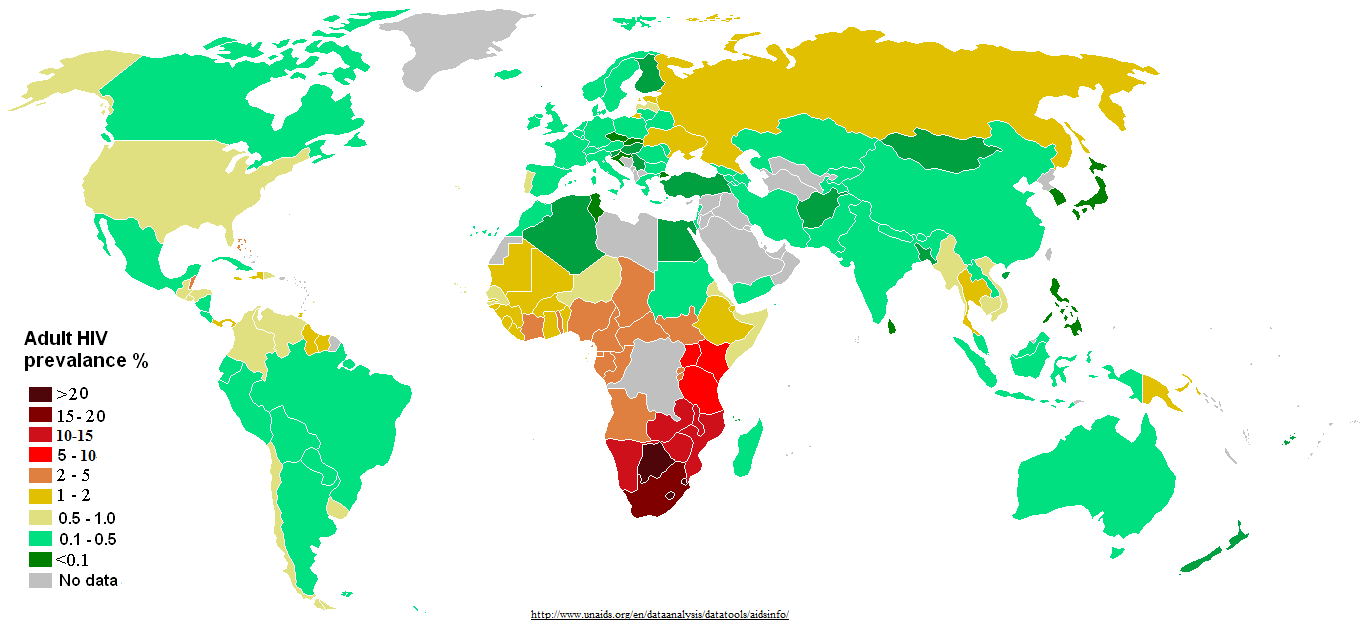New Drug Approvals 2012 - Pt. XXXV - Elvitegravir/Cobicistat/Emtricitabine/Tenofovir disoproxil fumerate (STRIBILD®)
On August 27, FDA approved the complete regimen for treatment of Human Immunodeficiency Virus -1 (HIV-1) infection in adults who are antiretroviral treatment-naïve. STRIBILD®, combination of a HIV-1 integrase strand transfer inhibitor (INSTI) - Elvitegravir, a pharmacokinetic enhancer - Cobicistat and two nucleos(t)ide analog HIV-1 Reverse Transcriptase (RT) inhibitors (NRTI's) - Emtricitabine/Tenofovir disoproxil.
Acquired immunodeficiency syndrome (AIDS) is a disease of the human immune system caused by HIV infection, in which progressive failure of the immune system allows life-threatening opportunistic infections and cancers to thrive. HIV infects and kills vital cells involved in immune system such as T helper cells (specifically CD4+ T cells, macrophages and dendritic cells. When CD4+ T cell numbers decile below a critical level, cell-mediated immunity is lost and the body becomes progressively more susceptible to opportunistic infections.
HIV/AIDS is a global pandemic. As of 2012 approximately 34 million people have HIV worldwide. Of these approximately 16.8 million are women and 3.4 million are less than 15 years old. For more information on the disease epidemiology or any other information on HIV/AIDS, check Wikipedia or UNAIDS.
The management of HIV/AIDS typically includes the use of antiretroviral drugs which are medications for the treatment of infection of HIV. Different antiretroviral drugs restrain the growth and reproduction of HIV, that are broadly classified by the phase of the retrovirus life-cycle that the drug inhibits.
The life-cycle of HIV (all steps 1 to 6) can be as short as about 1.5 days and HIV lacks proofreading enzymes. These cause the virus to mutate very rapidly, resulting in high genetic variability. When antiretroviral drugs are used improperly, these multi-drug resistant (MDR) strains can become dominant genotypes. This lead to development of combination therapy - wherein several drugs (different classes of antiretroviral drugs), typically three or four, are taken in combination, the approach is known as highly active antiretroviral therapy (HAART).
In recent years, many such complex regimens has been developed and termed as fixed-dose combinations. Some other examples of fixed-dose combination drugs approved by FDA for HIV treatment can be found here. And one such combination drug is STRIBILD®; which is a fixed-dose combination of Elvitegravir, Cobicistat, Emtricitabine and Tenofovir DF. Elvitegravir, emtricitabine and tenofovir directly suppress viral reproduction. Cobicistat increases the effectiveness of the combination by inhibiting liver enzymes that metabolise the other components. In this regimen of drugs Elvitegravir and Cobicistat are the new molecular entities (NME), the rest two emtricitabine (prescribing info.) and tenofovir (prescribing info.) are pre-approved, prescribed NRTI drugs.
Elvitegravir (Research Code: GS1937, ChEMBL: CHEMBL204656, PubChem: CID 5277135, ChemSpider: 4441060 ) inhibits the strand transfer activity of HIV-1 integrase, an HIV-1 encoded enzyme that is required for viral replication. Inhibition of integrase prevents the integration of HIV-1 DNA into host genomic DNA, blocking the formation of the HIV-1 provirus and propagation of the viral infection. Elvitegravir does not inhibit human Topoisomerases I or II.
IUPAC Name : 6-(3-Chloro-2-fluorobenzyl)-1-[(2S)-1-hydroxy-3-methylbutan-2-yl]-7-methoxy-4-oxo-1,4-dihydroquinoline-3-carboxylic acid
Canonical SMILES : COc1cc2N(C=C(C(=O)O)C(=O)c2cc1Cc3cccc(Cl)c3F)[C@H](CO)C(C)C
Standard InChI : 1S/C23H23ClFNO5/c1-12(2)19(11-27)26-10-16(23(29)30)22(28)15-8-14(20(31-3)9-18(15)26)7-13-5-4-6-17(24)21(13)25/h4-6,8-10,12,19,27H,7,11H2,1-3H3,(H,29,30)/t19-/m1/s1
Standard InChI Key : JUZYLCPPVHEVSV-LJQANCHMSA-N
Cobicistat (PubChem: CID 25151504, ChemSpider: 25084912) is a selective, mechanism-based inhibitor of cytochromes P450 of the CYP3A subfamily. Inhibition of CYP3A-mediated metabolism by cobicistat enhances the systemic exposure of CYP3A substrates, such as elvitegravir, where bioavailability is limited and half-life is shortened by CYP3A-dependent metabolism.
IUPAC Name : 1,3-thiazol-5-ylmethyl [(2R,5R)-5-{[(2S)-2-[(methyl{[2-(propan-2-yl)-1,3-thiazol-4-yl]methyl}carbamoyl)amino]-4-(morpholin-4-yl)butanoyl]amino}-1,6-diphenylhexan-2-yl]carbamate
Canonical SMILES : CC(C)c1nc(CN(C)C(=O)N[C@@H](CCN2CCOCC2)C(=O)N[C@H](CC[C@H](Cc3ccccc3)NC(=O)OCc4cncs4)Cc5ccccc5)cs1
Standard InChI : 1S/C40H53N7O5S2/c1-29(2)38-43-34(27-53-38)25-46(3)39(49)45-36(16-17-47-18-20-51-21-19-47)37(48)42-32(22-30-10-6-4-7-11-30)14-15-33(23-31-12-8-5-9-13-31)44-40(50)52-26-35-24-41-28-54-35/h4-13,24,27-29,32-33,36H,14-23,25-26H2,1-3H3,(H,42,48)(H,44,50)(H,45,49)/t32-,33-,36+/m1/s1
The recommended dose of STRIBILD is one tablet administered orally once a day, which contains 150 mg of elvitegravir, 150 mg of cobicistat, 200 mg of emtricitabine, and 300 mg of tenofovir disoproxil fumarate. Peak plasma concentrations were observed 4 hrs post-dose for elvitegravir with Cmax of 1.7 ± 0.4, 3 hrs for cobicistat with Cmax of 1.1 ± 0.4. Almost 98-99% of elvitegravir bound to human plasma, whereas cobicistat was 97-98% bound. Median terminal plasma half-life of 12.9 for elvitegravir was found with 94.8% and 6.7% of the administered dose excreted in feces and urine respectively. Cobicistat exhibited 3.5 hrs of plasma half-life with 86.2% and 8.2% of the administered dose excreted in feces and urine.
Full prescribing information can be found here.
The license holder is GILEAD, and the product website is www.stribild.com.






